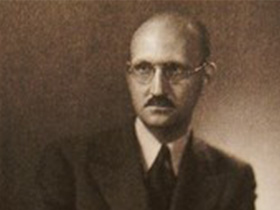


Still, to achieve permanence, stories really need to end up in books. Lovecraft, Clark Ashton Smith, and others, was published in pulps beginning in the 1920s: the most important of these pulps being Weird Tales.

Moreover, much significant short fiction, by Howard and Leiber as well as by H. I would view Lord Dunsany’s work, mostly at about 1500 words, a huge clutch of stories published starting in 1905, as second only to Tolkien in influence upon contemporary Fantasists. Going back to the beginnings of Fantasy as a separate genre, and extending to this day, much influential work has been short fiction. I don’t really propose to answer those last questions, except to say that whether or not short fiction is less commercially important to Fantasy than Fat Trilogies, there is a lot of fine short Fantasy available. Is the Fantasy genre really best suited for the longer form? Are short stories merely a minor side branch of the river of Fantasy? Though long SF novels and series of novels are certainly around, there is still an emphasis on the short form, and there are, for example, two prominent anthologies per year devoted to collecting the best Science Fiction (not Fantasy) short stories, while there is only half of a prominent Best Fantasy anthology. Short stories are called “the lifeblood of the field”. Howard’s Conan books, and Fritz Leiber’s Fafhrd and the Grey Mouser series, appear to the casual eye to be long series of novels, albeit comparatively short novels.įantasy’s sister genre, Science Fiction, is often said to be built on the short form.

Even if we go farther back in time, Robert E. It’s a fairly long novel which divides naturally into six books, but which was presented in three volumes due to the exigencies of the publishing business.) And certainly Tolkien’s first popular imitators, such as Terry Brooks ( The Sword of Shannara and sequels), published long series of longish books. After all, The Lord of the Rings is a trilogy, isn’t it? (Actually, it’s not. This is often blamed (or credited) to the influence of J.R.R. New entries, which have garnered considerable critical praise as well as sales, include James Stoddard’s House books, Steven Erikson’s new series beginning with Gardens of the Moon, and Elizabeth Haydon’s new series beginning with Rhapsody. Other popular series of recent years include David Eddings’ Belgariad, Robin Hobb’s Assassin, and Raymond Feist’s Magician. Probably the best selling current fantasy series is Robert Jordan’s The Wheel of Time, which now extends to 9 books, with the books close to 1000 pages each. A common acronym is FFT, for “Fat Fantasy Trilogy”. It has become something of a cliche these days to note that popular fantasy seems to be concentrated in novels, and indeed in very large novels, or series of novels. By Rich Horton from Black Gate 2, copyright © 2001 by New Epoch Press.


 0 kommentar(er)
0 kommentar(er)
